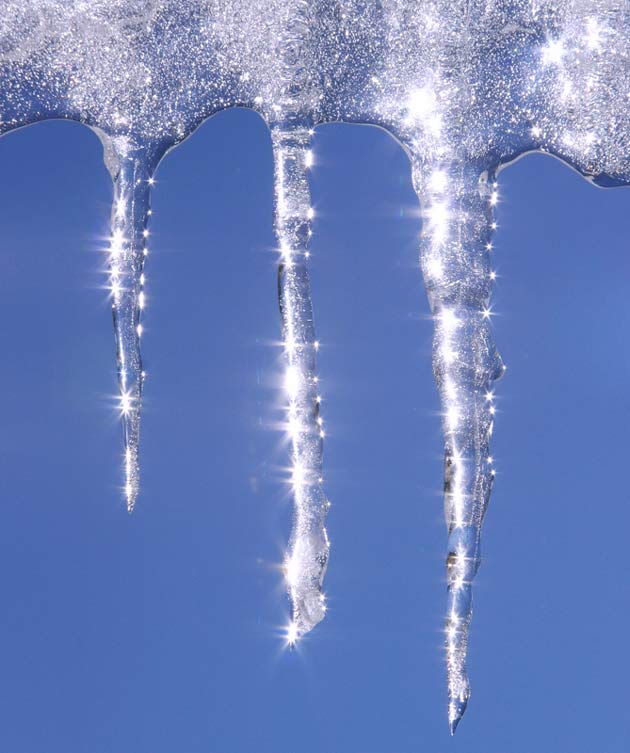Icicle Formation Mystery Solved

Scientists have long understood how snowflakes take shape, but icicles have remained a wintry wonder. A solution has finally emerged—from a cave.
In 2005, researchers determined that stalactites, the long, carrot-like structures that hang from ceilings of caves, have a distinctive shape that can be described by a simple mathematical equation.
Oddly, the same math applies to icicles, a new study shows.
Unexpected result
Although stalactites [image] and icicles [image] have similar shapes, they don't have any physics in common. Icicles grow from heat diffusion and rising warm air, while stalactites rely on the diffusion of carbon dioxide gas to grow.
- Chasing Tornadoes
- Why We Itch
- Zit Myths Cleared Up
- How Planes Fly
- How People Walk on Fire
- Bad Breath: Causes and Cures
- The Real Scoop on Rumors and Gossip
- How Cacti Survive: Surprising Strategies Quench Thirst
"We didn't expect to be able to apply the same math because the physics of the two are so different," said mathematician and physicist Ray Goldstein of the University of Cambridge in the United Kingdom. "It is really the same shape, apart from the bumps and wiggles," Goldstein said. "It confirms what we know with our eyes."
The findings were published in a recent issue of the journal Physics of Fluids.
Get the world’s most fascinating discoveries delivered straight to your inbox.
Icy ingredients
Icicles typically form on days when the outdoor air temperature is subfreezing but sunshine warms and melts some snow or ice. As it drips off your roof, a water droplet freezes when it loses its heat to the cold air.
An icicle starts with a few frozen droplets. When it reaches a certain size, drops begin to drip along the side of the structure.
"The water will run down the sides of the formation evenly in a thin film and freeze on the way down," said University of Arizona physicist Martin Short, another member of the study team. "This sort of freezing, thin film of water is what leads to the eventual icicle shape."
Heat at work
The thin fluid layer on the surface of an icicle gives off heat that warms the air around it through a process called conduction. As warm air rises, it removes heat from the liquid layer and causes it to freeze. Here is the main point: The buffer of heated air is widest at the top of the icicle, where conduction is slowest.
"The buoyant air layer is really the most important factor in determining the icicle shape," Short told LiveScience. Imagine the warm air a blanket of differing thickness. The thinner part allows more heat to escape from the tip area than the thick part of the blanket allows at the base.
"So, the tip grows faster than the base, making the icicle pointy," Short said.
The research was based on icicle photographs. To test their idea against actual icicles, the team plans to grow icicles in a lab and film their growth.
- What Makes Ice Cubes Cloudy?
- How Ice Melts: Longstanding Mystery Solved
- Snowflake Gallery: No Two Alike, of Course
- How Weather Changed History
